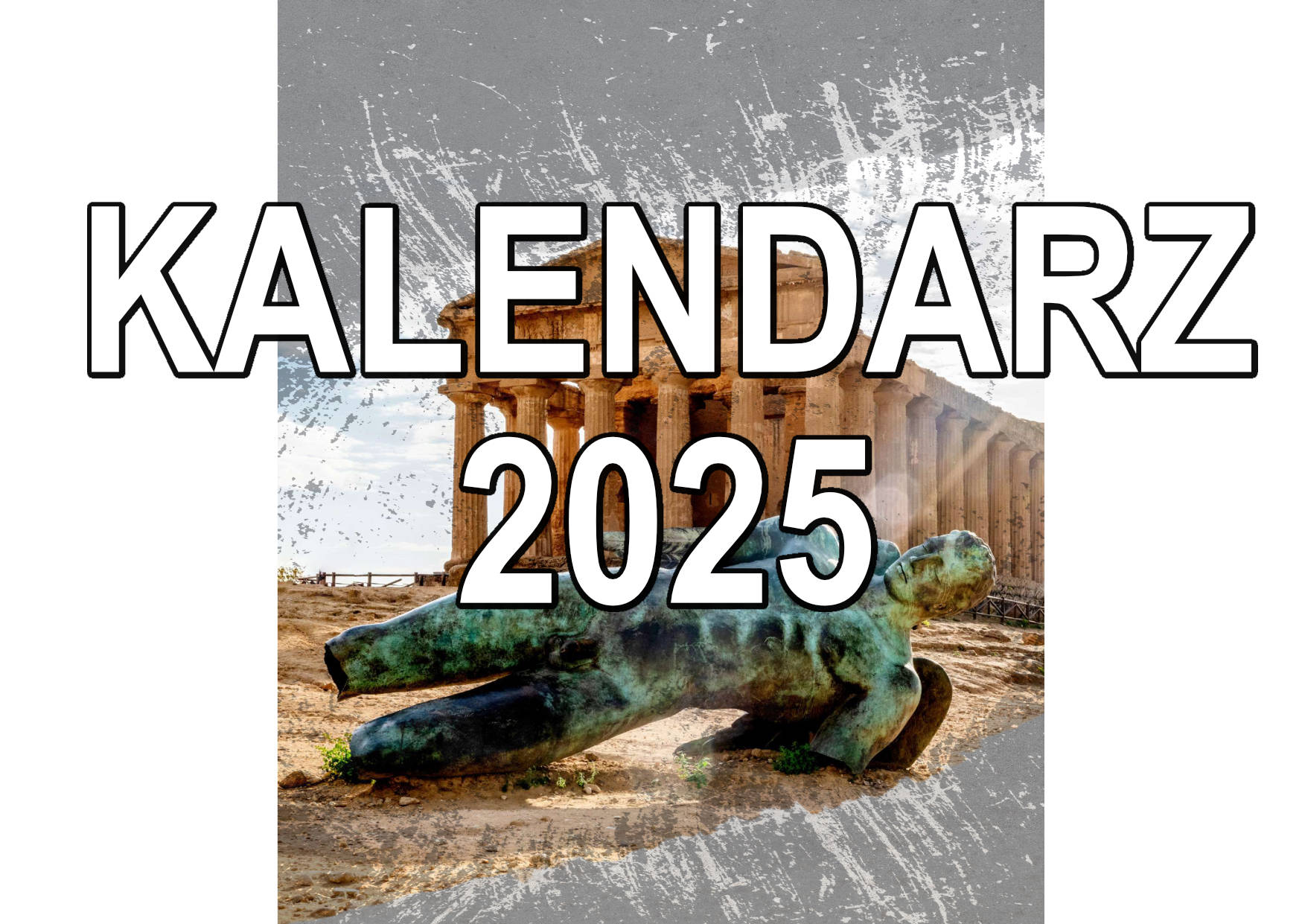Misja Eremu, Sheikh Abd el-Qurna, Egipt
Media patronage
National Geographic Polska
Polish Centre of Mediterranean Archaeology University of Warsaw
Adam Mickiewicz University, Poznań, Institute of Archaeology
Polish Archaeological Mission at Sheikh Abd el-Qurna, Egypt works under the auspices of the Polish Center of Mediterranean Archaeology, University of Warsaw, in cooperation with Adam Mickiewicz University.
Visit us on Facebook and Twitter!
facebook.com/polishmissionqurna
facebook.com/misjaeremu.(Polish)
twitter.com/misjaeremu
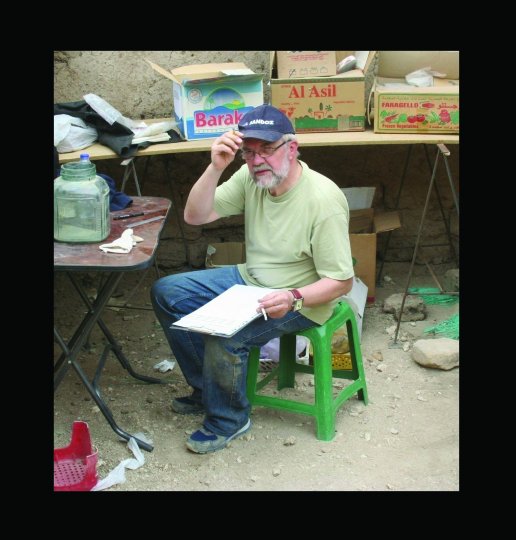
With deepest sadness we inform that on 29 September, 2017 Tomasz Górecki has passed away. He has been the director of the Polish Archaeological Mission at Sheikh Abd el-Qurna since the very beginning, our outstanding boss and wonderful colleague. Our grief at this unexpected death is hard to express, we are passing the condolences to His Family.
Polish Archaeological Mission at Sheikh Abd el-Qurna is an archaeological expedition to Qurna in Egypt (ancient Western Thebes, at the west bank of present-day Luxor). The mission works under the auspices of the Polish Center of Mediterranean Archaeology, University of Warsaw, in cooperation with Adam Mickiewicz University. Since the beginning in 2003 the mission is directed by Tomasz Górecki (National Museum in Warsaw). In 2016 the work is run in the field by Andrzej Ćwiek (Adam Mickiewicz University and Poznań Archaeological Museum), the deputy director of the mission.
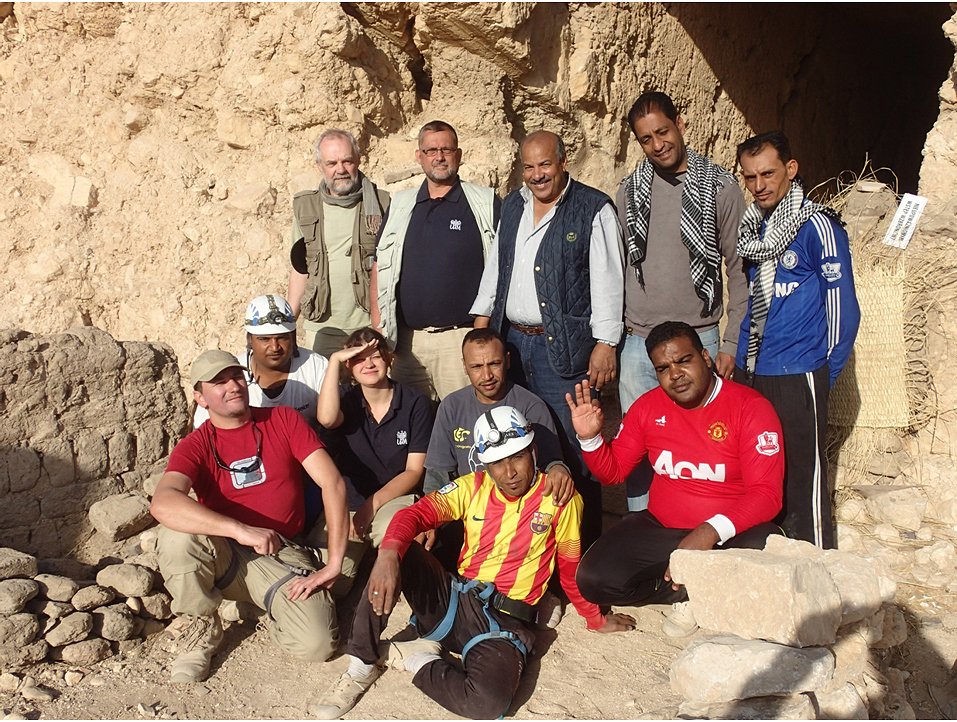
The site under research is an unnamed desert knoll beside Sheikh Abd el-Qurna hill, south of the Valley of the Kings and Deir el-Bahari. The knoll borders the valley behind Sheikh Abd el-Qurna where one of the pharaohs of the early Middle Kingdom period (ca. 2000 BC) started building his mortuary complex. Highest officials of the state cut their tombs in the slopes of hills surrounding the valley with their rulers planned burial. Two of these tombs, marked MMA 1151 and MMA 1152, are located on the abovementioned knoll.
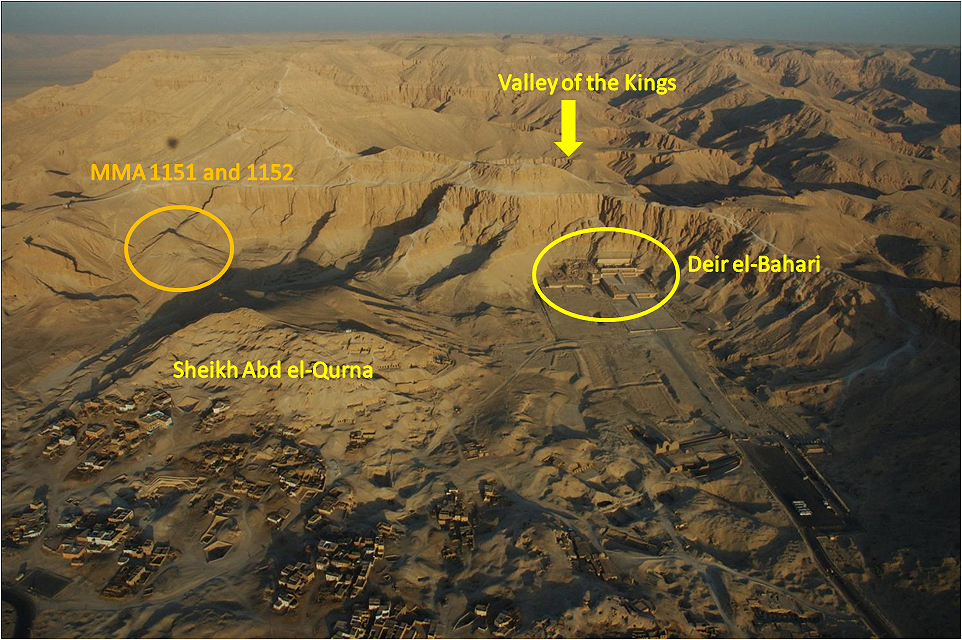
The tombs were several times re-used during the Pharaonic Period and in the Middle Ages the site was settled by Coptic monks who made their hermitage there, using the tombs and building new structures outside them.
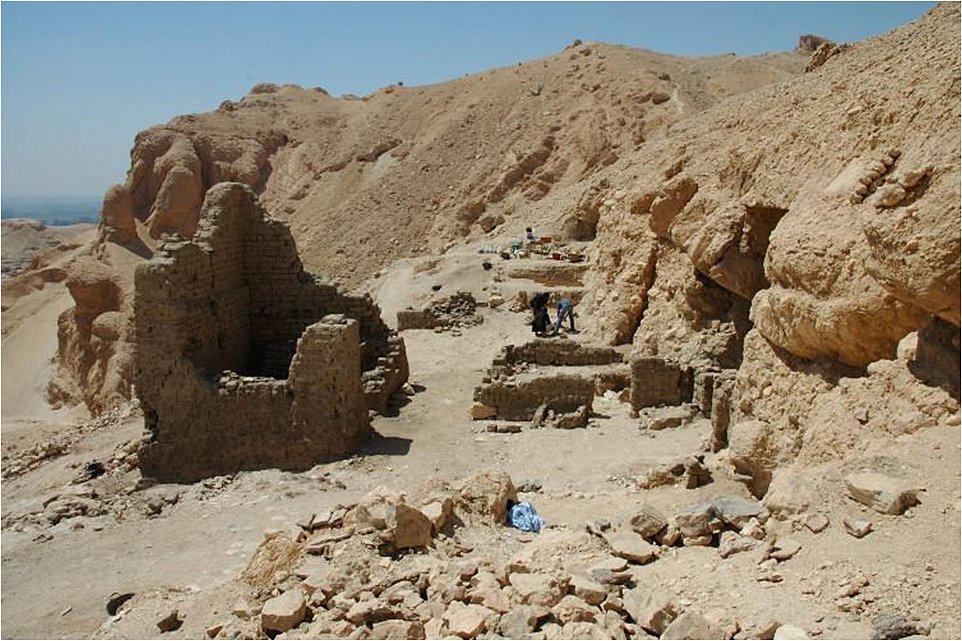
The still ongoing research on the remains of the hermitage, occupied from 6th through 8th century AD, gave the mission its popular name, included in its logo: Misja Eremu, which means "Mission of the Hermitage" in Polish. Among the finds from the hermitage were not only thousands of amphorae in which water was delivered to the monks, but also innumerous items of every day life and objects of handicraft made by the monks. The highlights of the excavations were parchment and papyrus books with some of the oldest Christian texts, discovered at the garbage dump on the slope of the hill.
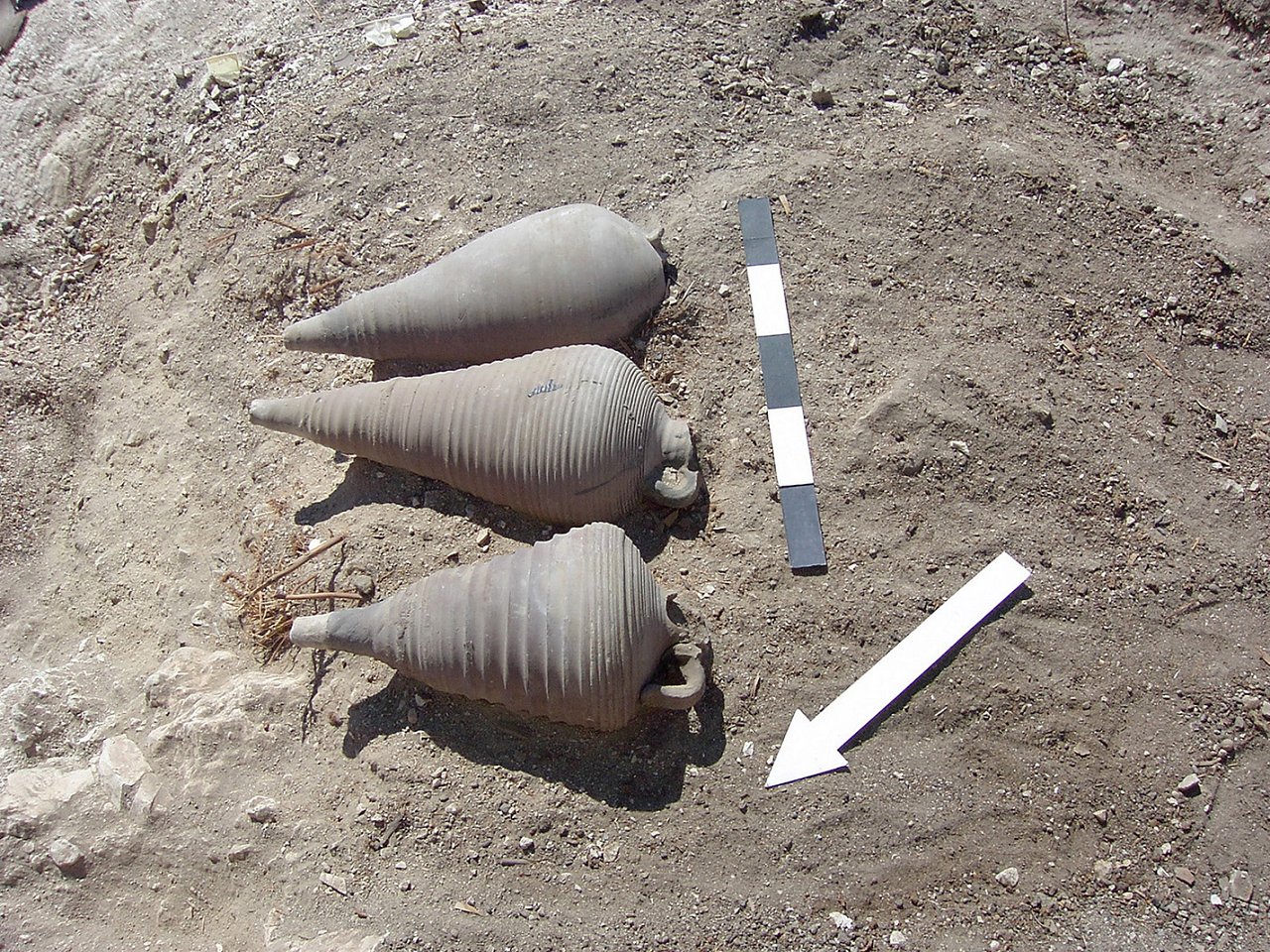
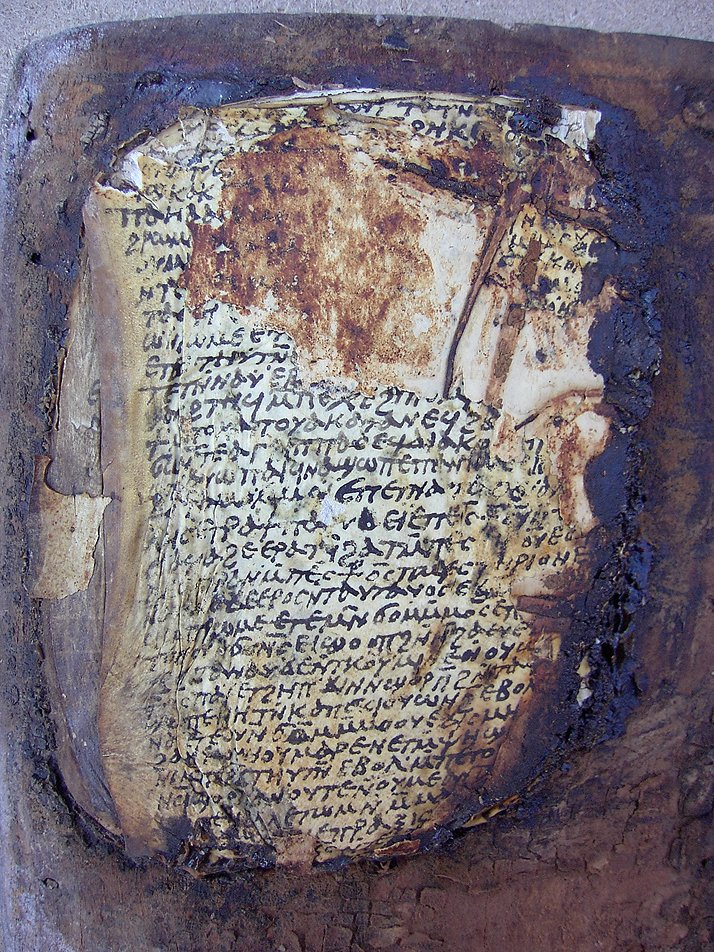
Starting from the season 2015 the research has been focused on the architecture, funerary equipment and other artifacts dating from the Pharaonic Period. This means first of all excavations in the rock-cut subterranean structures of the tomb MMA 1152, reaching the depth of over twenty meters. The work in a 18-meter deep burial shaft conducted in February 2015 required installation of a special construction above the shafts mouth and using sophisticated climbing equipment.
The most valuable item found in 2015 was the fragment of a linen velum a veil for a sacred image, with names of Ptolemy XII and the goddess Isis written in brown ink. It must have been a gift of the pharaoh to the nearby temple of Deir el-Medina, found there and brought to the hermitage by scavenging monks. This inconspicuous piece of linen with the royal cartouches has some historical importance and has but few parallels.
The mission will be back to the site in February 2016 to continue excavations in MMA 1152.
Staff of the mission 2015
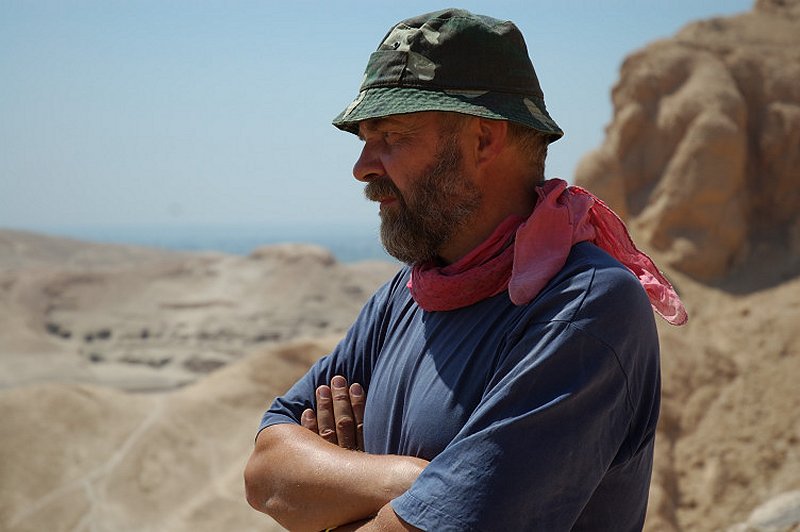 With deepest sadness we inform that on 29 September, 2017 Tomasz Górecki has passed away. He has been the director of the Polish Archaeological Mission at Sheikh Abd el-Qurna since the very beginning, our outstanding boss and wonderful colleague. Our grief at this unexpected death is hard to express, we are passing the condolences to His Family.
With deepest sadness we inform that on 29 September, 2017 Tomasz Górecki has passed away. He has been the director of the Polish Archaeological Mission at Sheikh Abd el-Qurna since the very beginning, our outstanding boss and wonderful colleague. Our grief at this unexpected death is hard to express, we are passing the condolences to His Family.
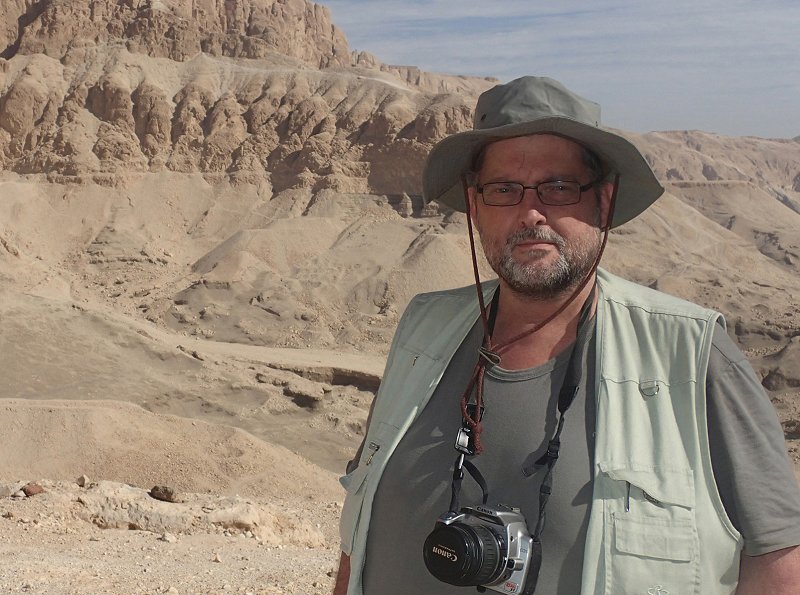 Deputy director of the mission
Deputy director of the mission
Egyptologist specialized in the ideology of kingship, architecture and iconography. Archaeologist interested in stone materials. Assistant professor at the Adam Mickiewicz University and curator in the Archaeological Museum in Poznań.
Contact: andrzejcwiek@yahoo.com
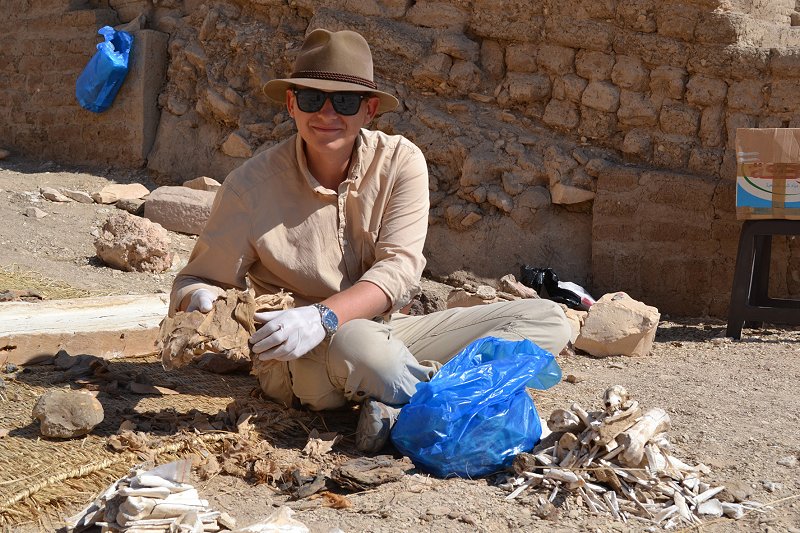 Archaeologist and Egyptologist, specialized in tomb architecture, funerary customs and cult of the dead in ancient Egypt. PhD candidate in the Institute of Archaeology of the University of Wrocław. Director of the research project in the Middle Kingdom tombs at North Asasif.
Archaeologist and Egyptologist, specialized in tomb architecture, funerary customs and cult of the dead in ancient Egypt. PhD candidate in the Institute of Archaeology of the University of Wrocław. Director of the research project in the Middle Kingdom tombs at North Asasif.
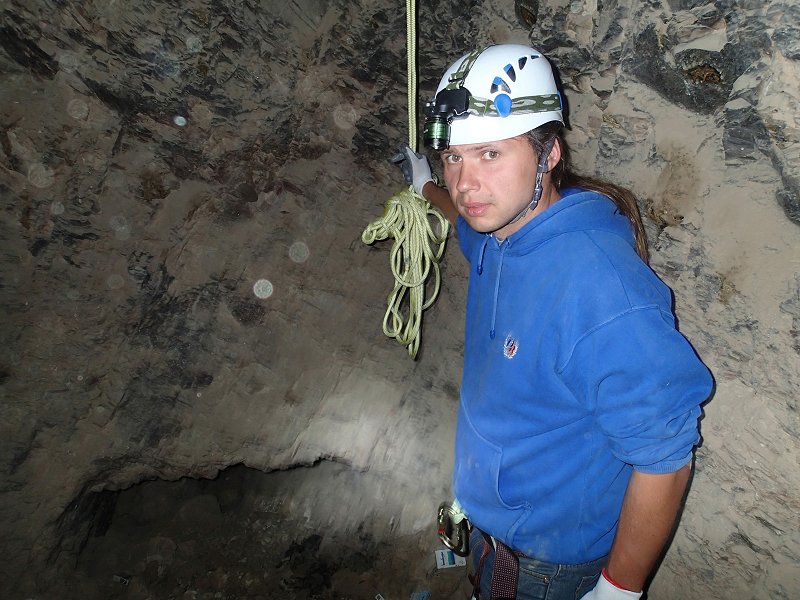 Archaeologist specialized in flints. Preparing his M.A. thesis on Paleolithic tool technology in the Institute of Archaeology of the University of Wrocław, practicing research on flints as well as Pharaonic field archaeology at North Asasif and Qurna.
Archaeologist specialized in flints. Preparing his M.A. thesis on Paleolithic tool technology in the Institute of Archaeology of the University of Wrocław, practicing research on flints as well as Pharaonic field archaeology at North Asasif and Qurna.
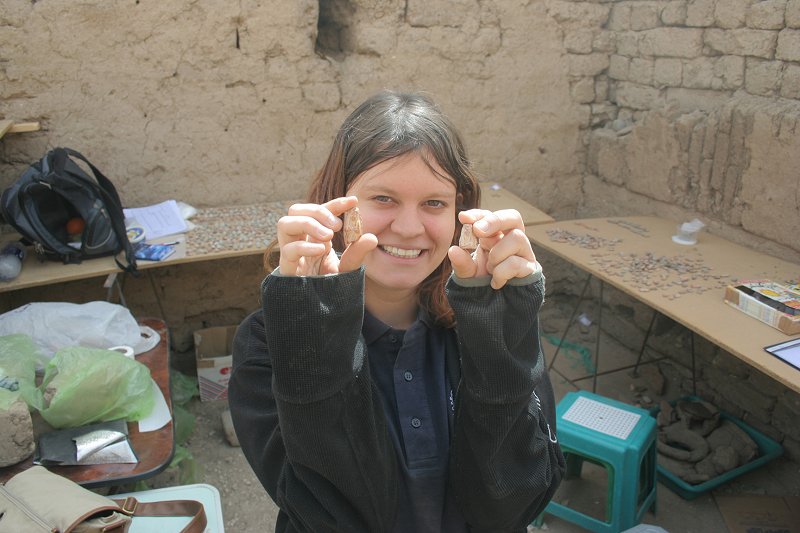 Student of archaeology at the Adam Mickiewicz University. Winner of the Diamond Grant of the Polish Ministry of Science and Higher Education for research project on Kushite burials in Thebes. Preparing her M.A. thesis on shabti figurines from the missions excavations.
Student of archaeology at the Adam Mickiewicz University. Winner of the Diamond Grant of the Polish Ministry of Science and Higher Education for research project on Kushite burials in Thebes. Preparing her M.A. thesis on shabti figurines from the missions excavations.
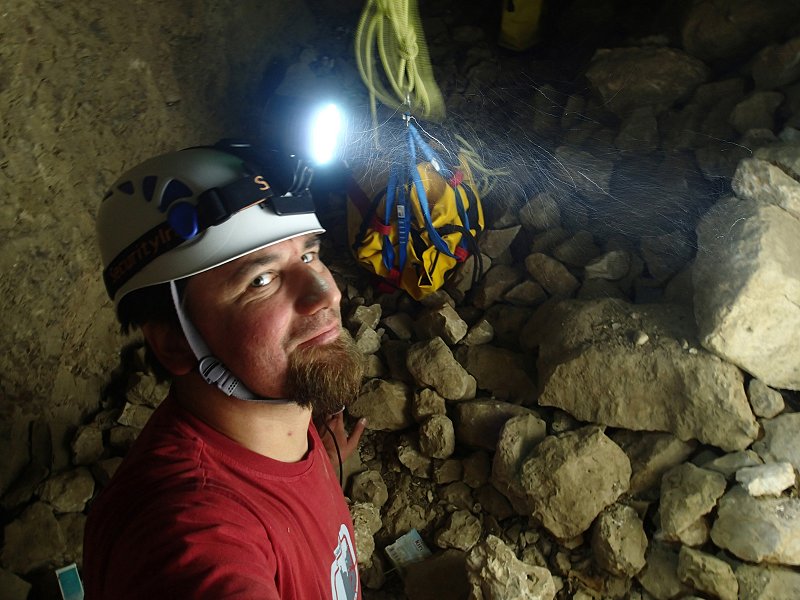 Conservator of art, specialized in architectural detail, stone sculpture and metal objects. Worked in Alexandria and Deir el-Bahari restoring Roman mosaics and sandstone sphinxes of Hatshepsut. Inventor of the mission's shaft exploration device, because of his climbing experience responsible for security of the digging staff.
Conservator of art, specialized in architectural detail, stone sculpture and metal objects. Worked in Alexandria and Deir el-Bahari restoring Roman mosaics and sandstone sphinxes of Hatshepsut. Inventor of the mission's shaft exploration device, because of his climbing experience responsible for security of the digging staff.
Staff of the mission 2003-2015
- Season 13. 2 January 2015 - 30 March 2015
Tomasz Górecki - archeologist, director of the mission
Andrzej Ćwiek - archaeologist, Egyptologist, deputy director of the mission
Patryk Chudzik - archeologist, Egyptologist
Adam Grylak - archeologist
Marta Kaczanowicz - archeologist
Arkadiusz Ostasz - conservator - Season 12. 13 February 2014 - 30 March 2014
Tomasz Górecki - archaeologist, ceramologist, director of the mission
Julia Górecka - ceramologist - Season 11. 21 January 2013 - 14 March 2013
Tomasz Górecki - archaeologist, ceramologist, director of the mission
Maciej Pawlikowski - geologist
Patryk Chudzik - archaeologist, egyptologist
Julia Górecka - ceramologist - Season 10. 11 January 2012 - 8 March 2012
Tomasz Górecki - archaeologist, director of the mission
Julia Górecka - archaeologist
Małgorzata Słowińska - architect
Dariusz Dąbkowski - photographer
Patryk Chudzik - archaeologist - Season 9. 23 October 2010 - 24 January 2011
Tomasz Górecki - archaeologist, director of the mission
Patryk Chudzik - archaeologist
Zbigniew Polak - archaeologist
Katarzyna Danys-Lasek - archaeologist
Anne Boudhors - papyrologist
Maciej Trzeciecki - archaeologist
Piotr Zambrzycki - conservator
Roman Stasiuk - phptographer
Julia Górecka - archaeologist
Christiane Hochstrasser-Petit - ethno-archaeologist
Anna Thommée - conservator
Tomasz Derda - papyrologist
Jarosław Majewski - geophisicist
Dominik Kaletta - geophysicist - Season 8. (2009)
Tomasz Górecki,
Mariola Orzechowska,
Julia Górecka,
Urszula Iwaszczuk,
Władysław Weker,
Jarosław Zieliński,
Beata Baliukieviciute,
Barbara Czaja-Szewczak,
Teodozja Rzeuska,
Christiane Hochstrasser-Petit,
Dariusz Dąbkowski. - Season 7. (2008)
Tomasz Górecki
Zuzanna Górecka
Urszula Iwaszczuk
Zbigniew Doliński - Season 6. (2007/2008)
Tomasz Górecki,
Eliza Szpakowska,
Barbara Czaja-Szewczak,
Robert Mahler,
Joanna Michalska,
Zbigniew Polak,
Szymon Maślak,
Łukasz Jarmużek - Season 5. (2006/2007)
Tomasz Górecki,
Eliza Szpakowska,
Szymon Maślak,
Zbigniew Polak,
Grzegorz Ochała,
Ewa Parandowska,
Monika Więch.
Season 4. (2006)
Tomasz Górecki,
Iwona Antoniak,
Małgorzata Czapińska,
Eliza Szpakowska,
Andrzej Ćwiek,
Cristobal Calaforra-Rzepka,
Jarosław Śliwa,
Mariusz Dybich,
Daria Kordowska,
Anna Thommee-Stachoń. - Season 3. (2005)
Tomasz Górecki,
Eliza Szpakowska,
Małgorzata Czapińska,
Teresa Kaczor,
Maciej Jawornicki,
Maciej Pawlikowski,
Janina Wielowiejska,
Izabela Mazur. - Season 2. (2004)
Tomasz Górecki,
Iwona Antoniak,
Ewa Czyżewska,
Eliza Szpakowska,
Zbigniew Szafrański,
Teodozja Rzeuska,
Mariola Orzechowska,
Teresa Kaczor,
Maciej Jawornicki. - Season 1. (2003)
Tomasz Górecki
Coptic
Sheikh Abd el-Qurna papyrus book conservation project
The two papyrus books and the set of parchment cards between wooden covers discovered by Tomasz Górecki in the Coptic hermitage in Sheikh Abd el-Gurna in 2005 necessitated immediate treatment. Expert conservators were rushed in then from Poland to take whatever protective measures and storage precautions were necessary in order to keep the finds in stable condition until a regular conservation project could be mounted.
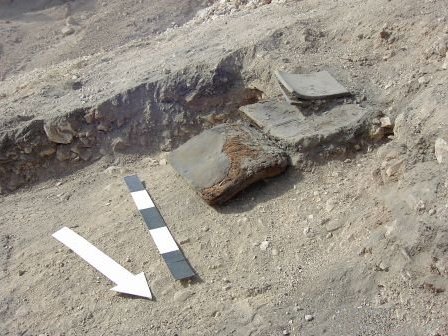
THE BOOKS UPON DISCOVERY IN 2005 IN THE RUBBISH DUMP OF THE HERMITAGE AT SHEIKH ABD EL-GURNA
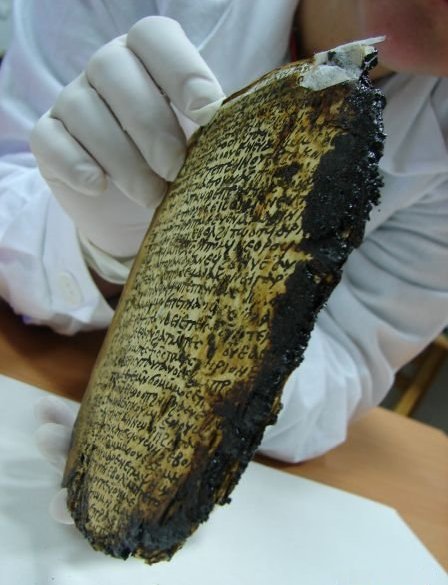
THE PARCHMENT CODEX FROM SHEIKH ABD EL-GURNA: BŁOCK SEPARATED FROM THE WOODEN COVERS
In March 2006, book conservators Daria Kordowska and Anna Thommee-Stachoń were installed in the very professional labs of the National Museum in Alexandria, where the finds had been transferred for conservation. Their first job was to disinfect the papyrus books. As far as the parchment cards were concerned, there was no need for such action as they were not threatened by microorganisms and could be separated and cleaned, and then consolidated and stretched, which permitted a first cursory look at their content.
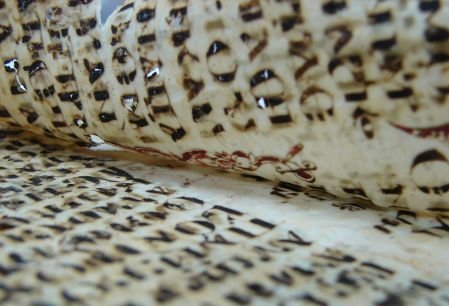
THE PARCHMENT CODEX FROM SHEIKH ABD EL-GURNA: SEPARATING PARTICULAR CARDS
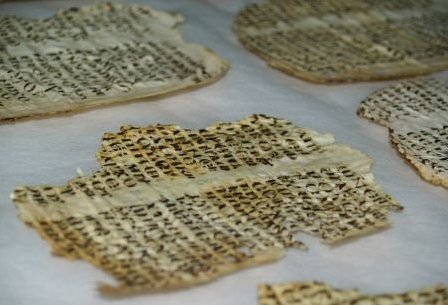
STRETCHING AS THE FIRST STEP OF THE CONSERVATION TREATMENT IN 2006
Two groups were identified: a larger set of about 25 cards with quotations from the Old Testament Prophecy of Isaiah, and a smaller one, 3 to 5 cards, which proved to be from an apocryphal text, the so-called Martyrium Petri, telling of the miraculous healing carried out by this Apostle. Both texts feature numerous floral ornaments on the margins. They have been dated provisionally to the 9th-10th century.
The restorers returned for another season of conservation in mid August and worked until late September. Now salvage conservation was effected on the two papyrus books. Exposure to temperature and humidity fluctuation and inevitable contact with polluted air (chlorides, sulphates, ozone, photochemical smog) had been deleterious for the condition of the books and it was noted with satisfaction that after a few months in the stable conditions of the Alexandria lab (60% Rh, 18-20°C), the deterioration processes had been halted. Even so, the books are in poor condition, the expert term for describing them being "deformed monoliths".
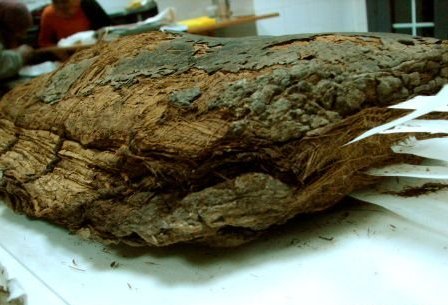
"DEFORMED MONOLITH" - ONE OF THE PAPYRUS CODICES FROM SHEIKH ABD EL-GURNA DURING CONSERVATION TREATMENT IN 2006

CONSERVATORS SEPARATING THE PAGES OF ONE OF THE PAPYRUS CODICES FROM SHEIKH ABD EL-GURNA. ALEXANDRIA NATIONAL MUSEUM LABORATORY, 2006
The first task was to separate the book covers from the blocks and to separate particular quires and pages mechanically. Wherever the fold of a quire was intact, indirect hydrating was necessary in order to permit separation without damage to the back. This way some of the leaves were separated as folia. The leaves were placed between acid-free cardboard sheets and stored in a custom-made wooden box, following the page sequence of the original book. The leather covers were protected with Japanese tissue paper and stored in specially designed passé-partout boxes for future conservation.
Standard documentation was made all through the process, not the least being careful photography of all the separated leaves, which can now be used for study, regardless of the steps that will be taken in the next stage of the project. The conservation of the covers especially needs to be completed, but the important decision at this point - and one which demands further significant funding from sources other than the Polish Centre - is the form in which the objects will be stored and presented in the future. It is advisable to consider full repair of the papyrus leaves and reconstruction of the binding threads to restore the books to their original form. A copy or reprint of the objects could also be made, leaving the conserved pieces as is in Museum storage. Another possibility is to seal the separated sheets between glass or Plexiglas panes, but in that case the integrity of the books will have been lost.
Pharaonic
At the end of XIth or at the beginning of XIIth Dynasty, one of the successors of Mentuhotep Nebhepetra (Mentuhotep Sankhkara? Mentuhotep Nebtauira? or Amenemhat I as suggested by Dorothea Arnold?) started building his mortuary complex at Western Thebes, in a valley behind Sheikh Abd el-Qurna, known in Egyptology as the Third Valley or The Valley of the Last Mentuhotep. This project, perhaps planned as resembling the tomb complex of Mentuhotep Nebhepetra at Deir el-Bahari, was never finished. Remains of the terrace with some constructions, including the royal tomb (TT 281), are preserved in the southern part of the valley. They were excavated by Herbert Winlock in 1921. It is not clear whether the ruler was buried in the tomb. Some of his officials, however, who located their tombs in the slopes of hills surrounding the valley, were buried there, the best known one being Meketra (TT 280). Two of the officials hewn their tombs in the small hill south of the royal complex. They must have been two of highest nobles since their burials are the two closest to, and on the right-hand side of the king resting in his eternal residence. These tombs, named MMA 1151 and MMA 1152 were many times reused after the Middle Kingdom, and in 6th-8th centuries AD they were the site of a Coptic hermitage.
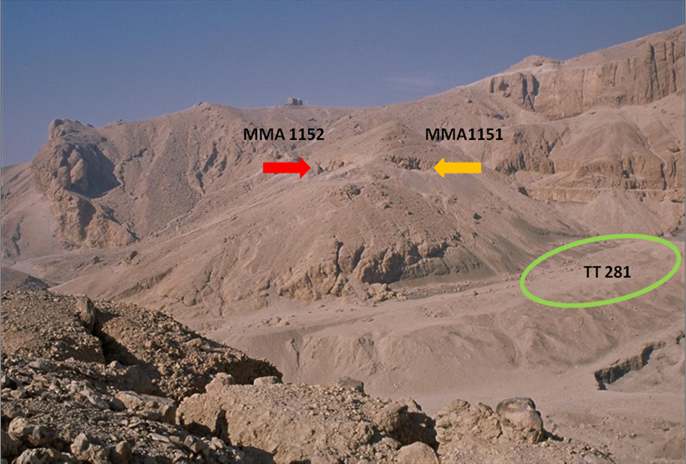
Since 2003 this site is under research by the Polish Archaeological Mission at Sheikh Abd el-Qurna, directed by Tomasz Górecki from the National Museum in Warsaw. Till 2015 the work concentrated on excavation and research of the Coptic hermitage. Remains of mudbrick constructions were unearthed, including a storeroom/refugial tower in front of the tomb. Among the finds there were thousands of amphorae and objects of craftsmanship made by monks, but also parchment and papyrus books with oldest Christian texts.
The richness of the material from the hermitage, as well as other circumstances, caused that research of the Pharaonic remains, and especially the substructures of the tombs, had to be delayed. Finally, however, in February 2015 the project of research of Pharaonic structures and objects started, led by Andrzej Ćwiek from the Adam Mickiewicz University and the Archaeological Museum in Poznań, deputy director of the mission, assisted by Patryk Chudzik from the University of Wrocław.
During the excavations made at the site of MMA 1151 and MMA 1152 in 2003-2014 were found many artefacts dated to the Pharaonic period, either belonging to interments in the tombs (mummies, fragments of coffins, funerary figurines, offering pottery, amulets), or brought from outside by the monks with the purpose of re-use (funerary cones to be used as stoppers for amphorae, fragments of stelae to make floors, wood for fire or as material for crafts, etc.)
At last, after twelve years of work in the hermitage, the time has come to go down and check, what is at the bottom of the shaft of MMA 1152 excavated partially by somebody (archaeologists? robbers?) in the 20th century. It was not Herbert Winlock, who excavated in 1921 the shaft and burial chamber in the neighbouring tomb MMA 1151. Writing on MMA 1152 in his notes, Winlock stated only: 'pit undug. French concession'. However, at some point later, somebody (French mission at Deir el-Medina?) excavated the shaft down to almost 18 meters, leaving no published record of these activities.
The team excavating in February and March 2015 the shaft of MMA 1152 directed by A. Ćwiek, included Arkadiusz Ostasz, conservator with engineering and climbing skills, who invented and organized a safe and efficient system of exploration of underground structures, and Marta Kaczanowicz, student of archaeology at the Adam Mickiewicz University, documenting the finds. To explore the shaft safely and efficiently, a special construction of wooden beams was built over the mouth of the shaft, for protection and as a support for special devices aimed at vertical transport of people and material. Climbing equipment of the latest generation was used, and everybody working in the room was secured by harnesses and lines.
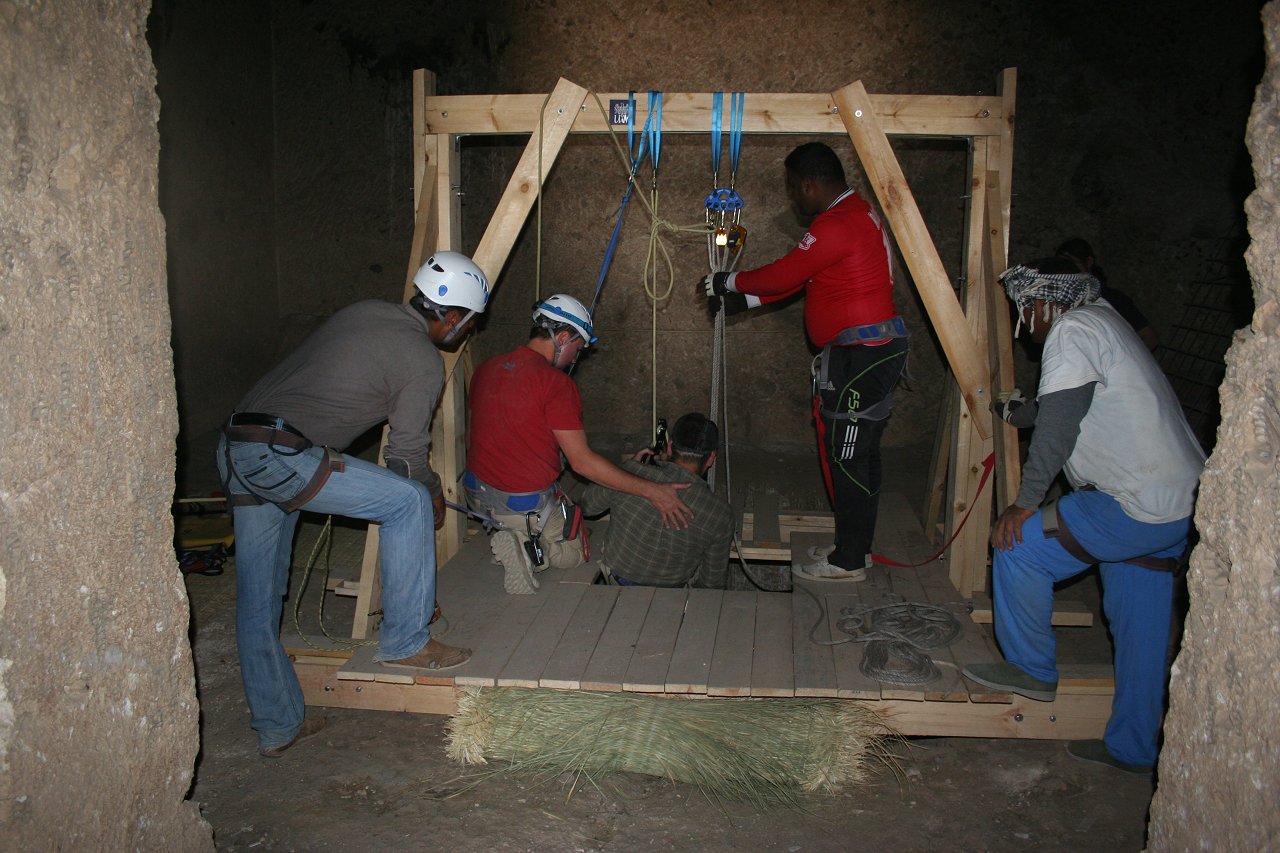
The shaft is over 18 meters deep and its section is 3.5 x 2 m.
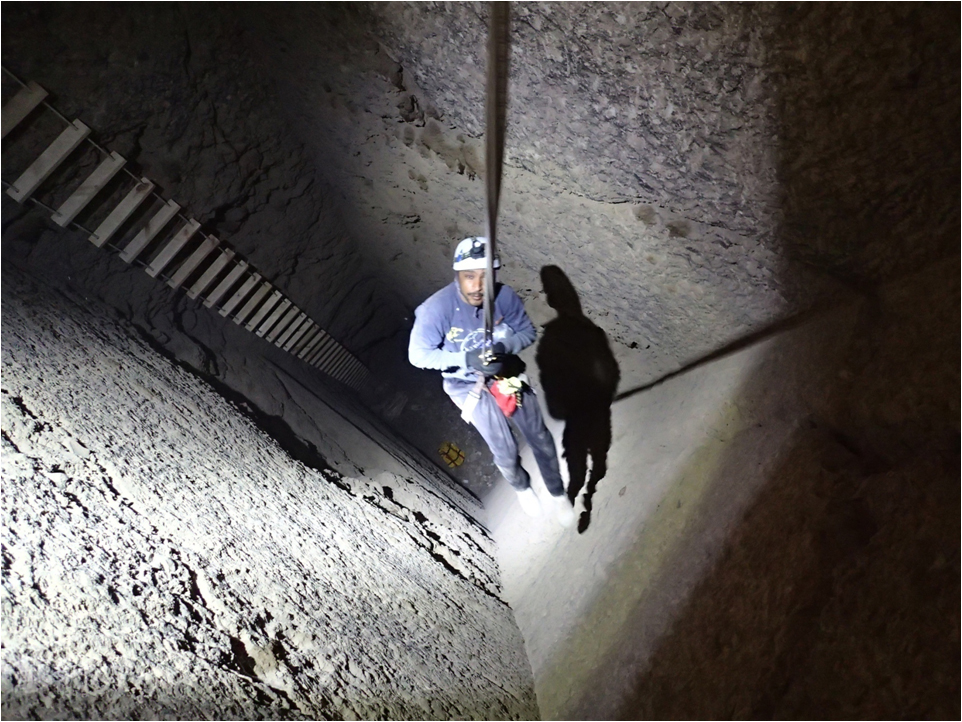
At its bottom, a sloping corridor opens that leads for some 4.6 m to the beginning of another shaft, to be explored in the next season. In 2015 the team started removing the fill of the lower part of the shaft and the corridor starting at its bottom. The debris was pulled up in special leather sacks and then transported outside the tomb on wheelbarrows. Sieving enabled finding even smallest items. Typical finds from the bottom of the shaft included pottery, pieces of sandstone, granite tools, fragments of mud-bricks, pieces of wooden coffins and cartonnages, linen, and human and animal bones.
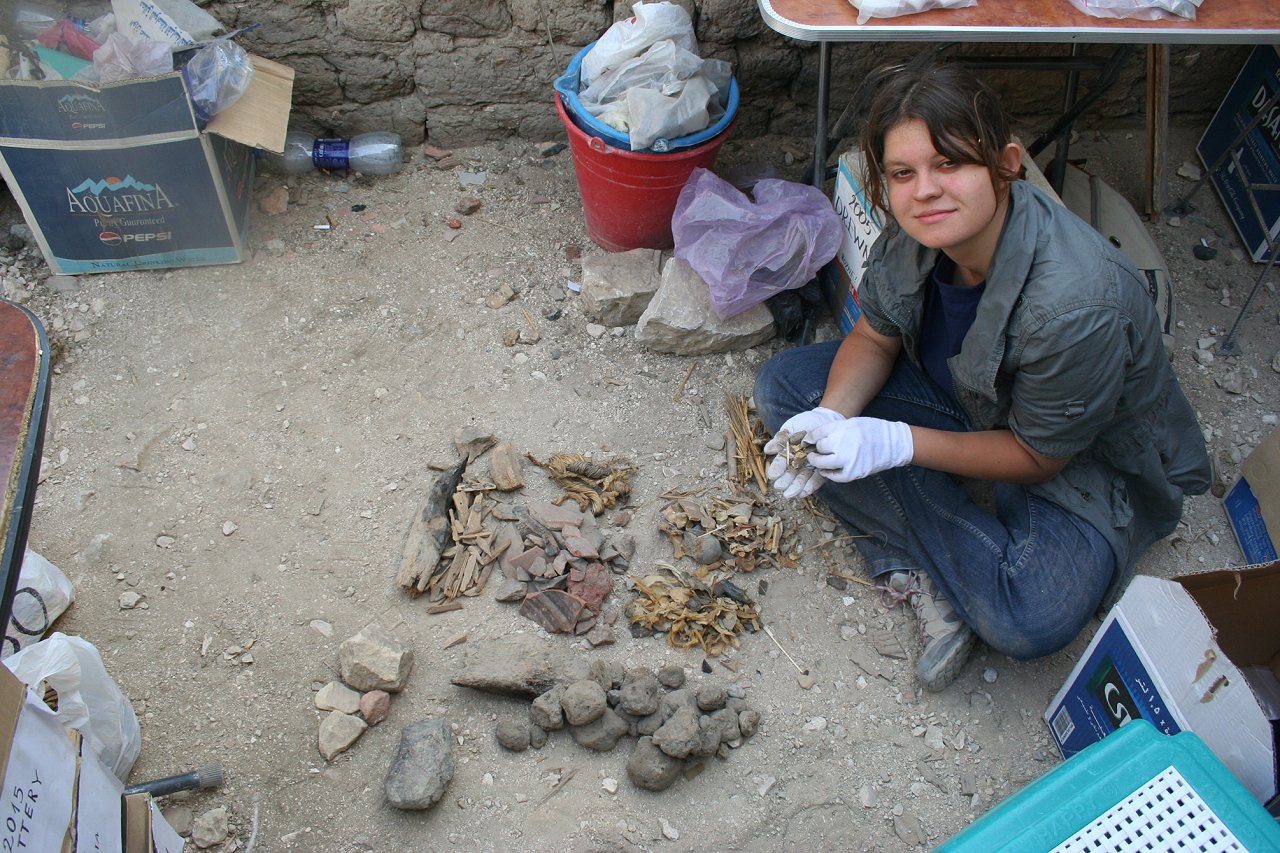
Faience beads, fragments of faience amulets and small clay shabtis dated to the Third Intermediate Period come from secondary burials in the tomb, the question if it was used for its original owners burial in the Middle Kingdom is still open.
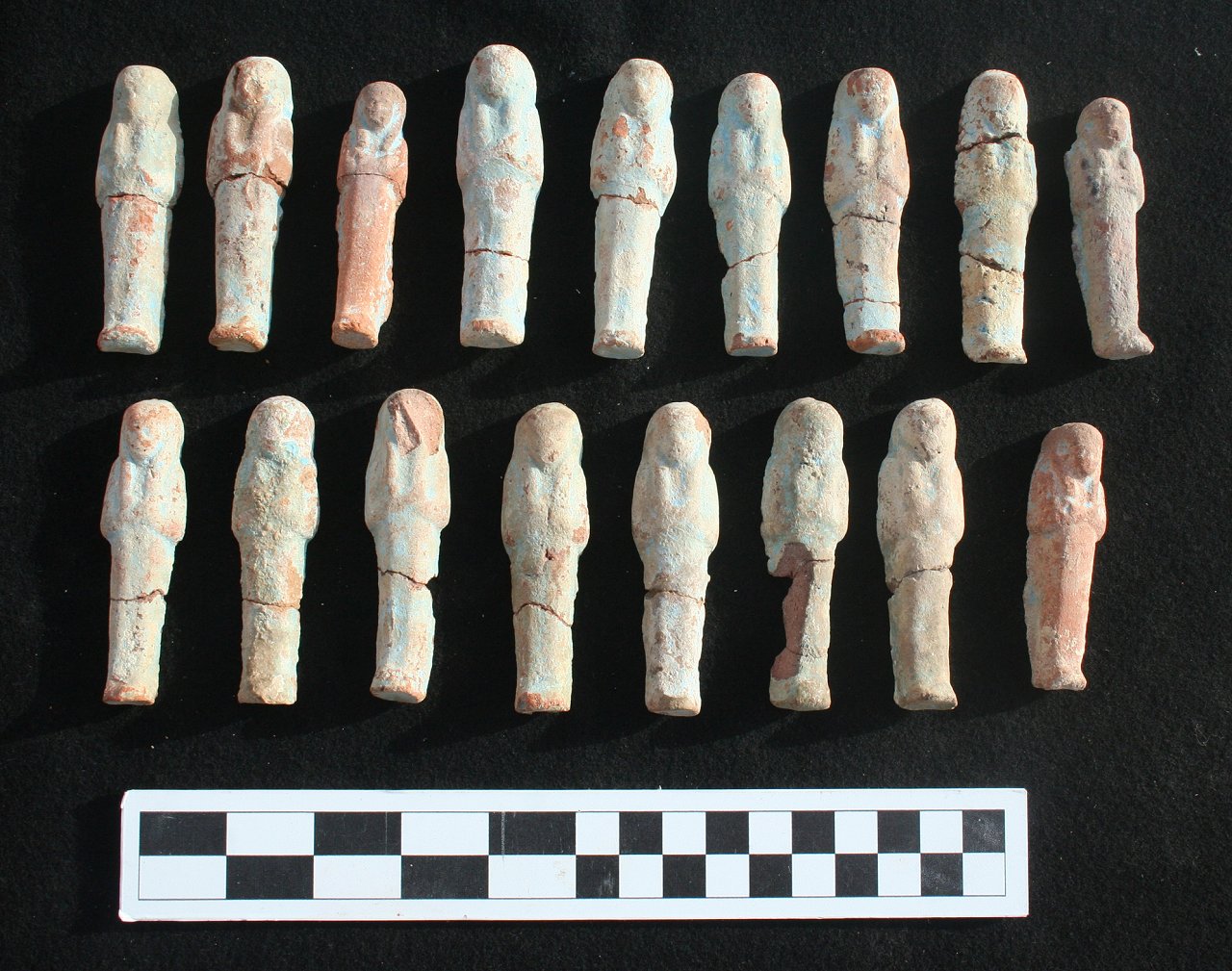
A highlight of the season 2015 was the discovery of a fragment of linen with remains of text written in ink. Two columns of the text contain cartouches of Ptolemy XII, the right-hand column starts with the name of Isis. Most probably it was a velum, i.a. a veil for the sacred image, in the temple of Deir el-Medina.
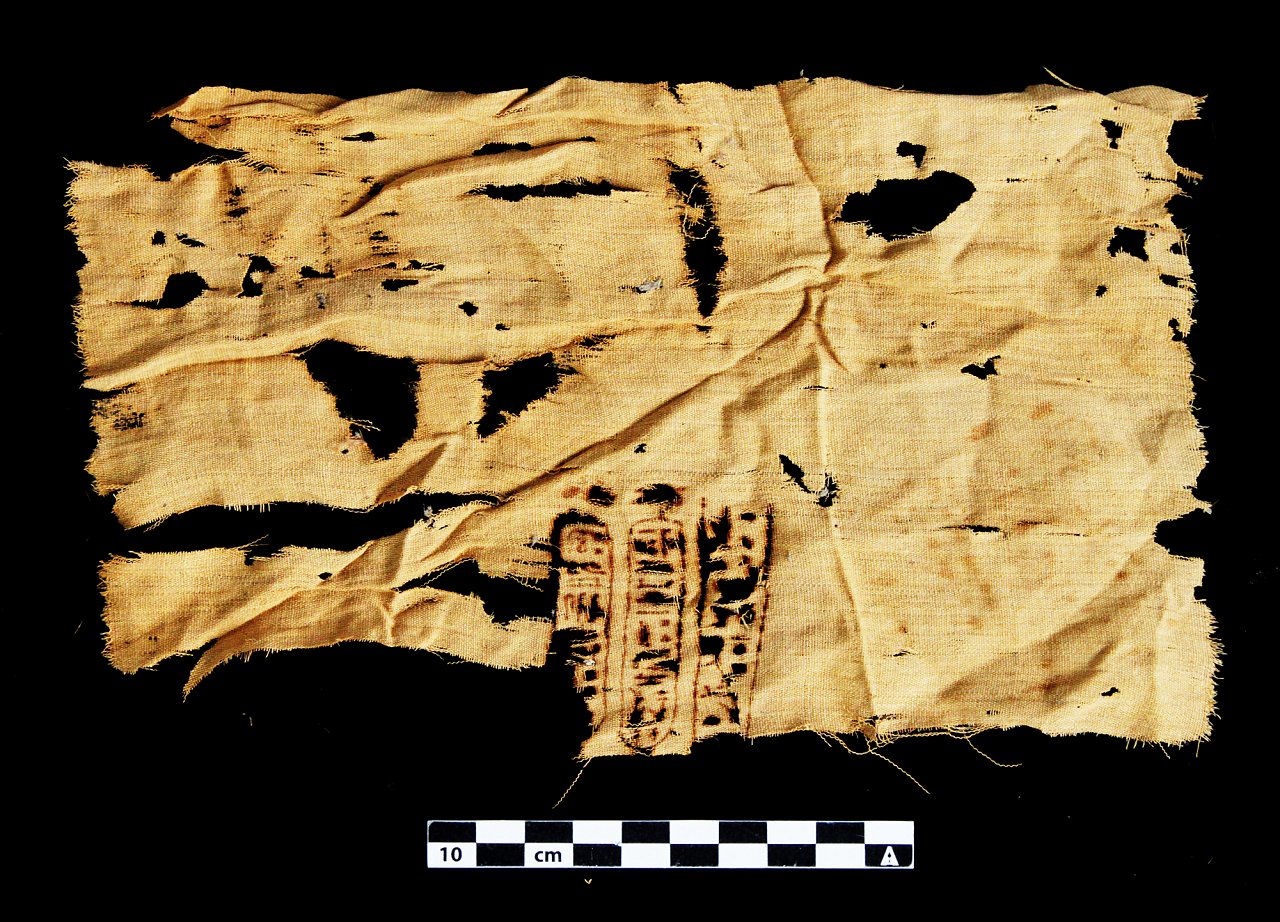
Ptolemy XII Auletes activity at Deir el-Medina is well attested. To his reign is dated the decoration of the gate. Probably rebuilding and embellishing of the temple was also an occasion for donation of items of ritual equipment, including linen veils. This may explain the cartouches and the name of the goddess.
The linen was found by Coptic monks and brought to the hermitage. Most probably they tore the small 'dirty' part of the linen, using the rest as a sheet or cloth. By their fortunate activity (cf. T. Górecki, 'It Might Come in Useful'. Scavenging Among the Monks from the Hermitage in MMA 1152, Etudes et Travaux XXVII (2014), pp. 129-150), a rare ancient Egyptian object has been preserved.
Publications of the mission
Tomasz Górecki, Erem koptyjski w Qurna - pierwszy sezon wykopalisk, Uniwersytet Warszawski. Pismo Uczelni No. 3(14), June 2003, p.15.
Tomasz Górecki, Sheikh Abd el-Gurna. Coptic Hermitage, first interim report, Polish Archaeology in the Mediterranean XV. Reports 2003 (2004), pp. 173-179.
Tomasz Górecki, Sheikh Abd el-Gurna. Hermitage in Tomb 1152, second season of excavations, Polish Archaeology in the Mediterranean XVI. Reports 2004 (2005), pp. 239-243.
Iwona Antoniak, Preliminary remarks on the Coptic ostraca from seasons 2003 and 2004, Polish Archaeology in the Mediterranean XVI. Reports 2004 (2005), pp. 244-247.
Teodozja Izabela Rzeuska, Mariola Orzechowska, Pharaonic pottery from Sheikh Abd el-Gurna, Polish Archaeology in the Mediterranean XVI. Reports 2004 (2005), pp. 248-256.
Tomasz Górecki, Odkrycie cennych ksiąg papirusowych w Gurna w Górnym Egipcie, in: D. Matyjasek (ed.), Jak to z pismem było. Muzeum Podlaskie w Białymstoku. Katalog wystawy, Białystok 2005, pp.10-11.
Tomasz Górecki, Manuskrypty z Qurna, Uniwersytet Warszawski. Pismo Uczelni No. 2(23), June 2005, pp.16-17.
Tomasz Górecki, Znalezione na śmietniku historii, Gutenberg 3, 2005 (17), pp. 24-29.
Tomasz Górecki, Sheikh Abd el-Gurna (Hermitage in Tomb 1152). Preliminary report, 2005, Polish Archaeology in the Mediterranean XVII. Reports 2005 (2007), pp. 263-272.
Wincenty Myszor, Enkomion of St. Pisenthios from Sheikh Abd el-Gurna, Polish Archaeology in Mediterranean XVII, Reports 2005 (2007), pp. 273-274.
Eliza Szpakowska, Preliminary remarks on the ancient Egyptian material from the tomb 1152 at Sheikh Abd el-Gurna, Polish Archaeology in the Mediterranean XVII. Reports 2005 (2007), pp. 275-277.
Tomasz Górecki, Sheikh Abd el-Gurna, in: A. Majewska (ed.), Seventy Years of Polish Archaeology in Egypt. Catalogue of the Exhibition. Egyptian Museum in Cairo, 21 October 21 November 2007, Warsaw 2007, pp.176-181.
Tomasz Górecki, Sheikh Abd el-Gurna, in: E. Laskowska-Kusztal (ed.), Seventy Years of Polish Archaeology in Egypt, Warsaw 2007, pp.183-190.
Tomasz Górecki, Limestone flake with a drawing of a guilloche. Contribution on the designing of Theban hermitage wall decoration, Etudes et Travaux XXII (2008), pp. 87-94.
Iwona Antoniak, Recent Discoveries in the Hermitage of Sheikh Abd el-Gurna: Coptic Codices and Ostraca, in: A. Delattre, P.Heilporn (eds), "Et maintenant ce ne sont plus que des villages " Thebes et sa region aux époques hellénistique, romaine et byzantine. Actes du colloque tenu a Bruxelles les 2 et 3 décembre 2005, Bruxelles 2008, pp. 10-16 (= Papyrologica Bruxellensia 34).
Tomasz Górecki, Eliza Szpakowska, Sheikh Abd el-Gurna. Archaeological activities in the hermitage in Tomb 1152, Polish Archaeology in the Mediterranean XVIII. Reports 2006 (2009), pp. 305-310.
Daria Kordowska, Conservation work on three Coptic manuscripts from Sheikh Abd el-Gurna, Polish Archaeology in the Mediterranean XVIII. Reports 2006 (2009), pp. 311-316.
Daria Kordowska, Anna Thommée, Koptyjskie manuskrypty z Gurna - historia znaleziska i metody konserwacji, in: J. Malinowski (ed.), Studia o sztuce Bliskiego i Środkowego Wschodu, Warszawa 2009, pp.
Tomasz Górecki, Sheikh Abd el-Gurna. Hermitage in Tomb 1152 and chapel in Tomb 1151, Polish Archaeology in the Mediterranean XIX. Reports 2007 (2010), pp. 297-303.
Tomasz Górecki, Guilloche Drawings on a Potsherd. A Contribution to the Designing of the Theban Hermitage Wall Decoration, Études et Travaux XXIII (2010), pp. 29-38.
Iwona Antoniak, New Ostraca from Thebes, in: G. Gabra, N.T. Takla (eds), Christianity and Monasticism in Upper Egypt. Vol. 2. Nag Hammadi - Esna, Cairo - New York 2010, pp.1-6.
Renate Dekker, Encomium on Pesynthios of Coptos: The recently discovered Sahidic version from Sheikh Abd al-Qurna, in: G. Gabra, N.T. Takla (eds), Christianity and Monasticism in Upper Egypt. Vol. 2. Nag Hammadi - Esna, Cairo - New York 2010, pp. 21-31.
Tomasz Górecki, Archaeological research in the hermitage in Tomb 1152 in Sheikh Abd
el-Gurna (West Thebes), Polish Archaeology in the Mediterranean XX. Research 2008 (2011), pp. 225-236.
Tomasz Górecki, Roman ceramic thymiaterion from a Coptic hermitage in Thebes, in: H. Meyza, I. Zych, Classica Orientalia. Essays Presented to Wiktor Andrzej Daszewski on His 75th Birthday, Warsaw 2011, pp. 199-207.
Tomasz Górecki, The hermitage in Sheikh Abd el-Gurna (West Thebes). Excavation, studies and conservation in 2009 and 2010/11, Polish Archaeology in the Mediterranean XXII. Research 2010 (2012), pp. 171-192.
Patryk Chudzik, Preliminary remarks on the architecture of the Theban Tomb 1152 at Sheikh Abd el-Gurna, Polish Archaeology in the Mediterranean XXII. Research 2010 (2012), pp. 193-198.
Patryk Chudzik, Prywatne grobowce skalne w Tebach Zachodnich na przełomie XI i XII dynastii, in: P. Chudzik, W. Ejsmond, (eds), Materiały z III Konferencji Studentów Archeologii Starożytnego Egiptu, Wrocław 19-20 maja 2011/Proceedings of the Third Student Conference of Archaeology of Ancient Egypt, Wrocław 19th-20th of May 2011, Warsaw 2012, pp. 116-131 [with English summary on pp. 128-129].
Anna Thommée, The Gurna Manuscripts (hermitage in MMA 1152), conservation report, 2010, Polish Archaeology in the Mediterranean XXII. Research 2010 (2012), pp. 199-208.
Urszula Iwaszczuk, Animal bone remains from Sheikh Abd el-Gurna: issues and opportunities, Polish Archaeology in the Mediterranean XXI. Research 2009 (2012), pp. 691-702.
Tomasz Górecki, Adam Łajtar, An ostracon from the Christian hermitage in MMA 1152, The Journal of Juristic Papyrology XLII (2012), pp. 135-164.
Tomasz Górecki, Edyta Kopp, Hieroglyphic Signs Scratched on a Sherd of an Egyptian Late Roman Transport Amphora, Études et Travaux XXVI (2013), pp. 237-243.
Tomasz Górecki, Archaeological Excavation in the Coptic Hermitage at Gurna (Egypt). The Research Program, the Particulars of the Research and Initial Findings, in: M. Dolińska, T. Górecki, A. Reiche, A. Twardecki, The Collection of Ancient and East Christian Art and Archaeological Excavation of the National Museum in Warsaw, Rocznik Muzeum Narodowego w Warszawie. Nowa Seria/ Journal of the National Museum in Warsaw. New Series 2(38) (2013), pp. 34-39; 49-51.
Tomasz Górecki, 'It Might Come in Useful'. Scavenging Among the Monks from the Hermitage in MMA 1152, Études et Travaux XXVII (2014), pp. 129-150.
Patryk Chudzik, Andrzej Ćwiek, Faience objects from the Tomb MMA 1152 at Sheikh Abd el-Qurna, Polish Archaeology in the Mediterranean XXIV (2015), forthcoming.
Media about us
Newsweek, 14 December 2015
http://historia.newsweek.pl/misja-eremu-polska-misja-archeologiczna-z-uam-w-poznaniu-w-egipcie,artykuly,375815,1.html
Minerva, October-November 2015
https://minervamagazine.co.uk/news_26-5_04.htm
www.ancient-origins.net, 16 July 2015
http://www.ancient-origins.net/news-history-archaeology/polish-archaeologists-discover-rare-gift-father-cleopatra-003432
Science in Poland, 13 July 2015
http://scienceinpoland.pap.pl/en/news/news,405745,rare-find-of-polish-scientists-in-egypt.html
The History Blog, 17 July 2015
http://www.thehistoryblog.com/archives/37533
Living in Luxor, 15 June 2015
https://www.facebook.com/permalink.php?story_fbid=863103313763213&id=127439430662942
